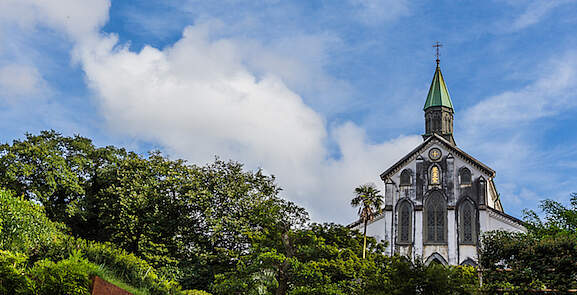
In 1865, Japan reopened its doors to foreigners after more than two centuries of total isolation. When Father Petitjean (1829-1884) of the Foreign Missions of Paris (MEP) landed in Nagasaki, he built a small church in the city. One day, he recalled, a group of 12 to 15 people, including men, women and children, had gathered in front of his church. I hurried to open it. A woman approached me and said, putting her hand over her heart:
“Is our heart and the heart of all of us here the same as yours?” I answered, Certainly! But where are you from?
“Most of us are from Urakami (1). Almost everyone in Urakami has the same heart as ours.” Then she immediately asked: “Where is the image of Our Lady?” When I heard this blessed name, Father Petitjean continued, all my doubts were gone. I realized that I was facing ancient Christians from Japan. There were 15,000 of them, who had kept the faith without a priest for two and a half centuries. I led the little group to the altar of the Blessed Virgin. And all began to pray, filled with joy and deeply moved.
__________________________________
(1) Today Urakami is a northern district of the city of Nagasaki in Japan. It was in Urakami between the two weapon factories belonging to Mitsubishi that the second atomic bomb (“Fat Man”) exploded on August 9, 1945, at 11:02 local time, at an altitude of about 1,650 feet. At the time of Father Petitjean, Urakami and its high cathedral had not yet been destroyed (almost entirely) by the atomic bomb.
Encyclopedia Maria, Volume IV - Beauchesne 1956 - p.27